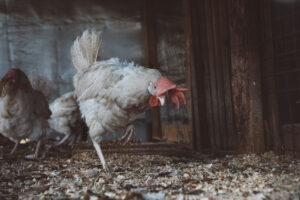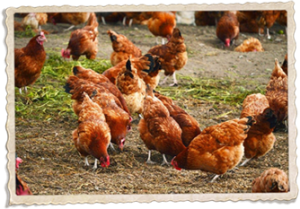 When you’re a backyard chicken owner, ensuring your flock has a comfortable, clean, and safe environment is crucial their health and happiness. One of the absolutely most important elements in achieving this is choosing the right bedding for their coop. Good bedding will absorb moisture, reduce odors, and help manage waste, making it an essential components of effective chicken care. Here’s what you need to know about selecting and maintaining the best bedding for your chickens:
When you’re a backyard chicken owner, ensuring your flock has a comfortable, clean, and safe environment is crucial their health and happiness. One of the absolutely most important elements in achieving this is choosing the right bedding for their coop. Good bedding will absorb moisture, reduce odors, and help manage waste, making it an essential components of effective chicken care. Here’s what you need to know about selecting and maintaining the best bedding for your chickens:
Understanding the Purpose of Bedding
Chicken coop bedding serves a multitude of purposes. It absorbs the moisture from the chicken droppings, reducing the risk of disease and keeping the coop dry. Meanwhile, it provides insulation during the colder months, helping to keep your chickens warm. Additionally, it makes cleaning easier, as you can simply remove and replace the bedding regularly.
Types of Bedding Materials
There are several types of bedding materials available, each with its own set of benefits:
- Pine Shavings: These are among the most popular choices due to their high absorbency and pleasant smell, which helps neutralize odors.
- Straw and Hay: While inexpensive, they are less absorbent and can be dusty. They’re best used in outdoor areas rather than inside the coop.
- Sand: Excellent for odor control and easy cleaning, sand is particularly useful in warmer climates. It’s akin to natural dirt flooring and provides an easy surface for chickens to scratch and dig.
- Recycled Paper: This is the economical and absorbent option, but it needs to be changed frequently to prevent mold and odors.
Benefits of Each Type
The best type of bedding will often depend on your local climate and the design of your coop. For example, sand might be ideal in hot, dry areas, but in damp climates, pine shavings or straw might provide better moisture control and warmth.
How to Maintain Your Bedding
It’s not enough to just buy quality bedding. It’s essential to regularly maintain the bedding to prevent disease and keep your chickens healthy. Remove soiled bedding and replace it with fresh material at least once per week, and more frequently if you notice it has become damp or heavily soiled. Every few months you should deep clean the coop and completely replace all of the bedding. You can do it more frequently if need be.
Bedding and Parasite Control
Avoiding Health Issues:
Dirty and damp bedding is a breeding ground for parasites and bacteria, which can cause disease to spread rapidly throughout your flock. When you keep the bedding dry and clean, you help minimize these risks. Consider adding diatomaceous earth to the bedding as this can deter parasites naturally, without the use of harsh chemicals.
Environmental Considerations
It’s important to consider the environmental impact of your bedding material. Organic materials like wood shavings and straw can be composted and used in gardens, making them a sustainable choice. Evaluate how you will dispose of used bedding and choose materials that align with your environmental goals.
Selecting the right bedding for your chicken coop contributes significantly to the overall health and well-being of your flock. If you’re just starting out or are looking to add to your current group, Chickens for Backyards has a selection of more than 100 breeds of chickens, ducks, turkeys, and guinea fowl. Contact us today to get started!

